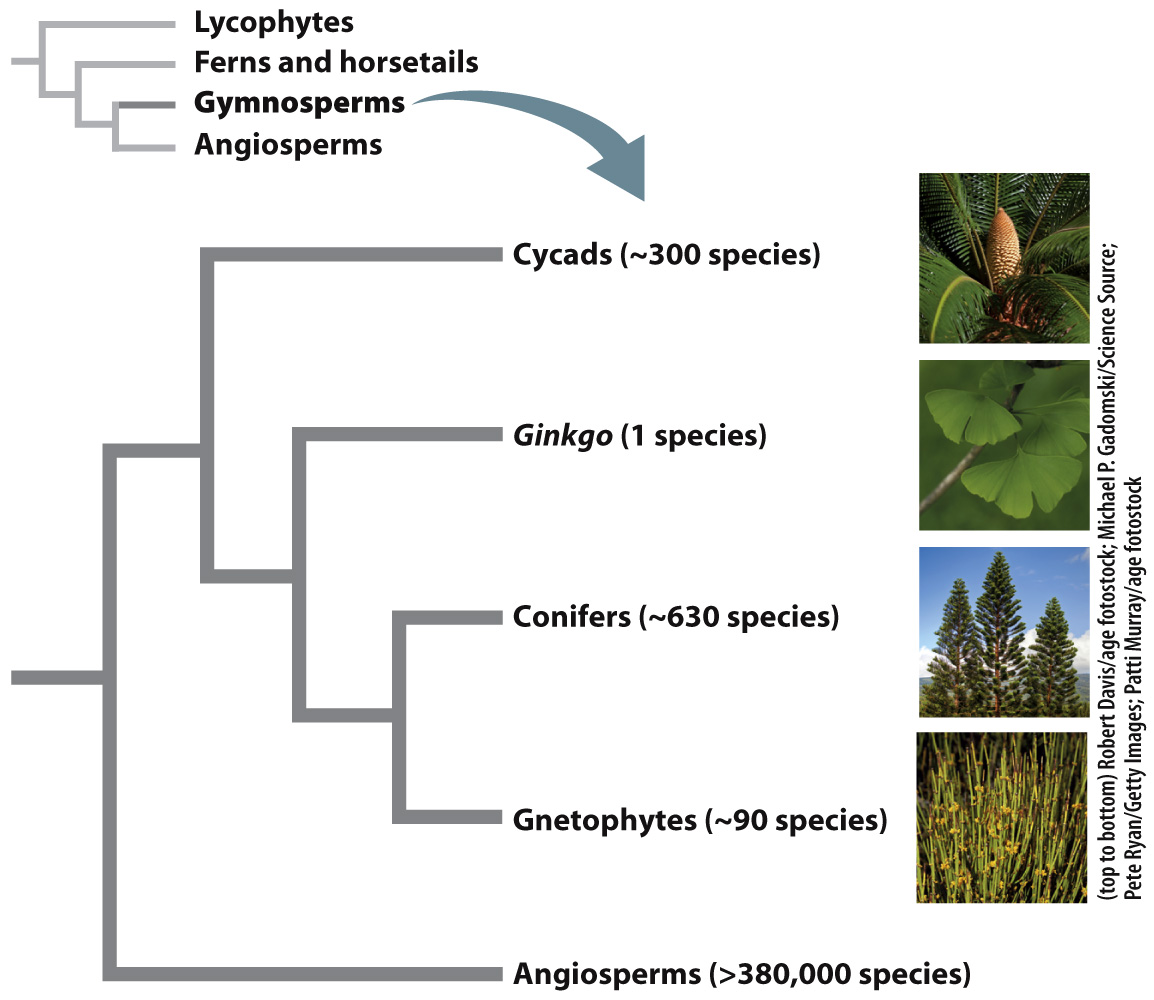33.4 Gymnosperms
Seed plants have come to dominate terrestrial environments since their first appearance about 365 million years ago. While the coal-
What factors have contributed to the success of seed plants? One is that they do not require external water for fertilization. Instead, the male gametophyte is transported through the air in pollen. As a result, seed plants are able to reproduce successfully in both rain forest and desert. Pollination, if successful, leads to fertilization and the formation of a seed. Seeds in turn enhance dispersal. The nutrient-
Although the fossil record shows that there were once many different groups of seed plants, today there are only two: gymnosperms and angiosperms. Gymnosperms total only a bit more than 1000 species, whereas angiosperms total 380,000 species or more. Despite their much lower diversity, in cool or dry parts of the world, gymnosperms such as pine trees can make up more of the forest canopy than do angiosperms. In this section, we examine the evolutionary history of the four groups of living gymnosperms (Fig. 33.14) and explore how their diversity and distribution has been affected by the rise of the angiosperms.
